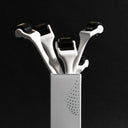Hair loss can be a distressing experience for women, impacting their self-esteem and overall confidence. As societal standards often equate long and luscious hair with beauty, many women find themselves seeking solutions to combat thinning hair or bald spots. One such solution that has gained popularity in recent years is hair transplant surgery. This article delves into the specifics of hair transplant for women, addressing common concerns, procedures, and outcomes.
Table of content
What is hair transplant for women?
Hair transplant for women is a surgical procedure designed to restore hair to areas of the scalp that are thinning or balding. This procedure involves relocating hair follicles from a donor site—typically the back or sides of the head—to the thinning areas. Hair transplant techniques, such as Follicular Unit Extraction (FUE) and Follicular Unit Transplantation (FUT), are commonly used to ensure natural-looking results. The primary aim of the procedure is to enhance hair density and improve the overall appearance of the hairline, helping women regain their confidence and feel more like themselves.
As your leading source for hair health information over the past 4 years, we never compromise on accuracy. When it comes to your health, you deserve information you can truly rely on - and earning your trust is our top priority.
Here's how Scandinavian Biolabs ensures every piece of content meets the highest standards of accuracy and integrity:
- Credentialed Experts: Our reviewers are actively practicing doctors and medical researchers
- Stringent Reviews: Content undergoes rigorous editing by subject specialists and review by a practicing doctor.
- Evidence-Based: We rely on well-established research from trusted scientific sources like peer-reviewed journals and health authorities.
- Full Transparency: Our editorial standards, writer credentials, reviewer credentials, correction process, and funding are all publicly documented.
- Independent Voice: While we do promote products, we operate in a vacuum to business operations. Our main goal is just an unwavering commitment to providing medically-sound guidance.
You can count on Scandinavian Biolabs to consistently deliver the trustworthy health information you deserve. Read our Editorial Standards.
Why do women consider hair transplants?
Women may consider hair transplants for various reasons, including genetic predisposition to hair loss, hormonal changes (especially during menopause), or medical conditions such as alopecia areata. Unlike men, who often experience a receding hairline and bald spots, women typically face diffuse thinning across the scalp. This can be particularly challenging, as it often goes unnoticed until significant hair loss occurs. A hair transplant offers a long-term solution to restore not only hair but also the psychological well-being of women affected by hair loss.
What are the different types of hair transplant procedures?
There are two primary techniques used in hair transplant procedures for women:
- Follicular Unit Extraction (FUE): This minimally invasive technique involves extracting individual hair follicles from the donor area and implanting them into the recipient site. FUE leaves minimal scarring and has a shorter recovery time compared to FUT.
- Follicular Unit Transplantation (FUT): Also known as the strip method, FUT involves removing a strip of scalp from the donor area, from which hair follicles are then harvested and transplanted. This method may be suitable for women with more extensive hair loss but typically results in a linear scar.
What to expect during the hair transplant procedure?
The hair transplant procedure typically begins with a consultation where the surgeon evaluates the extent of hair loss and discusses goals and expectations. On the day of the surgery, local anesthesia is administered to ensure comfort. The chosen technique (FUE or FUT) is then performed, which can take several hours depending on the number of grafts needed. Post-procedure, patients may experience some swelling and discomfort, which can be managed with medication. Most women can return to their normal activities within a few days, although complete healing may take several weeks.
What are the results and recovery time for women after a hair transplant?
Results from hair transplants for women can be visible within a few months, with full results typically noticeable after 6 to 12 months. Initially, transplanted hair may fall out—a normal part of the process known as “shock loss”—before new hair begins to grow. The transplanted hair will continue to grow naturally, and with proper care, the results can be long-lasting. Recovery time varies, but most women experience minimal downtime and can resume daily activities shortly after the procedure.
Are there any risks or side effects associated with hair transplants for women?
As with any surgical procedure, there are potential risks and side effects associated with hair transplants. These may include infection, scarring, or unnatural-looking hair growth if the procedure is not performed by an experienced surgeon. Additionally, some women may experience temporary numbness or sensitivity in the donor area. It is crucial for women considering a hair transplant to choose a qualified surgeon and to discuss all potential risks and side effects during the initial consultation.
How to choose the right surgeon for hair transplant?
Choosing the right surgeon for a hair transplant is critical for achieving satisfactory results. Here are some factors to consider:
- Experience and Qualifications: Look for a surgeon who specializes in hair restoration and has extensive experience with women’s hair loss.
- Before-and-After Photos: Request to see before-and-after photos of previous patients to evaluate the surgeon's work.
- Patient Reviews: Research patient testimonials and reviews to gain insight into the experiences of others.
- Consultation: Schedule consultations with multiple surgeons to discuss your options and get a feel for their approach and expertise.
Conclusion
Hair transplant for women is a viable and effective solution for those experiencing hair loss. With advancements in techniques like FUE and FUT, women can achieve natural-looking results that restore not only their hair but also their confidence. It is essential to approach the procedure with careful consideration, choosing a qualified surgeon and understanding the process and expectations. If you are a woman facing hair loss, a hair transplant could be the transformative solution you’ve been seeking.
```Tired of Thinning Hair? Try a Clinically Tested Serum.
Looking for a natural way to regrow hair and achieve a thicker, fuller head of hair? Ditch the stinging nettle for hair loss – Bio-Pilixin Serum is a drug-free hair activation serum that delivers clinically tested results.
Here's why Bio-Pilixin is superior:
- Clinically Tested Results: 93% of users saw a reduction in hair loss, and 73% experienced increased hair density.
- Safe and Natural: Unlike harsh chemicals, Bio-Pilixin uses plant growth factors derived from stem cell technology to nourish hair follicles and stimulate growth.
- Fast-Acting: See visible results in as little as 45 days (most typically see results within 150 days).
Stop wasting time on unproven remedies. Bio-Pilixin is the safe & effective serum you've been searching for.
Read more:






